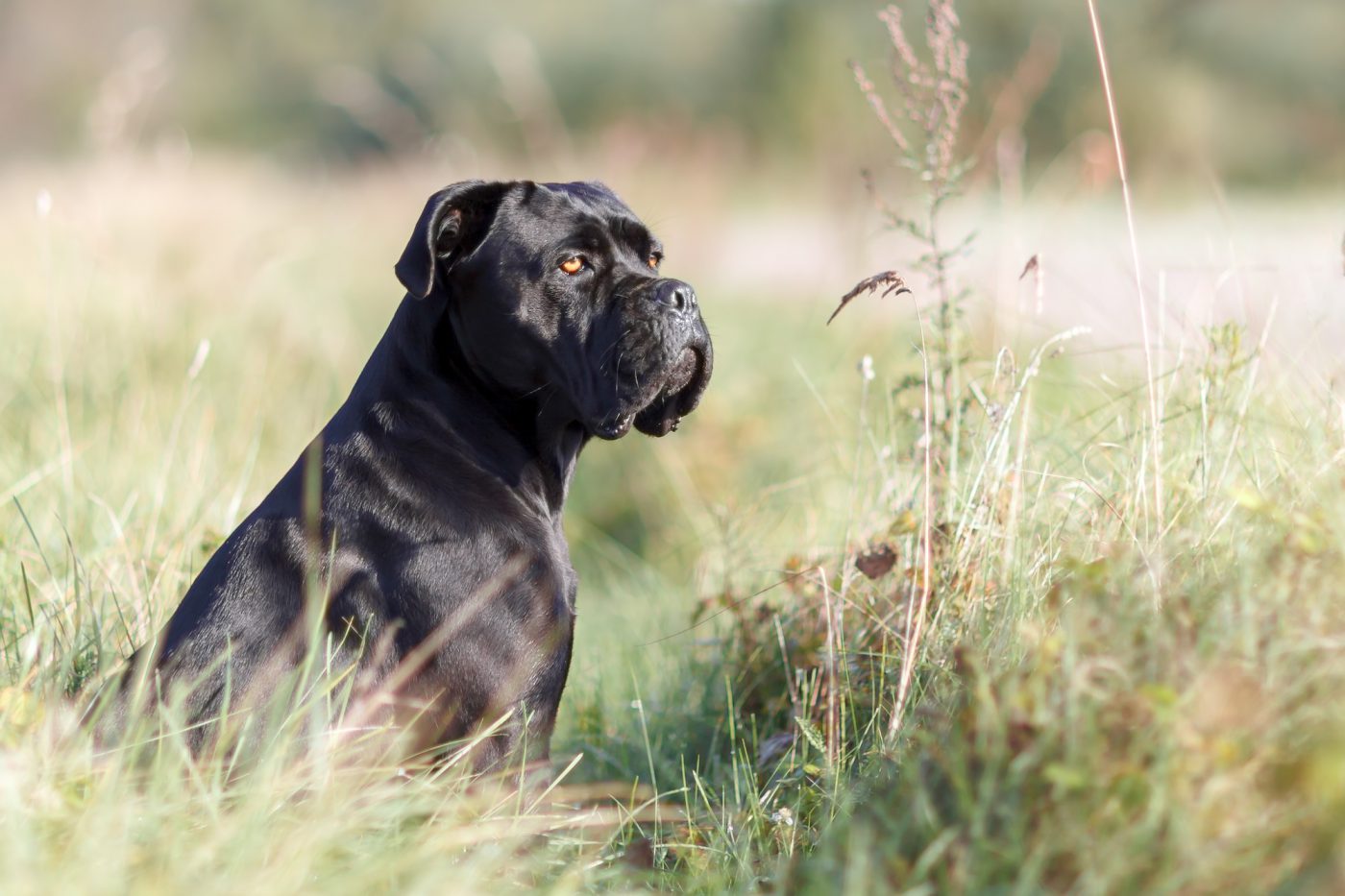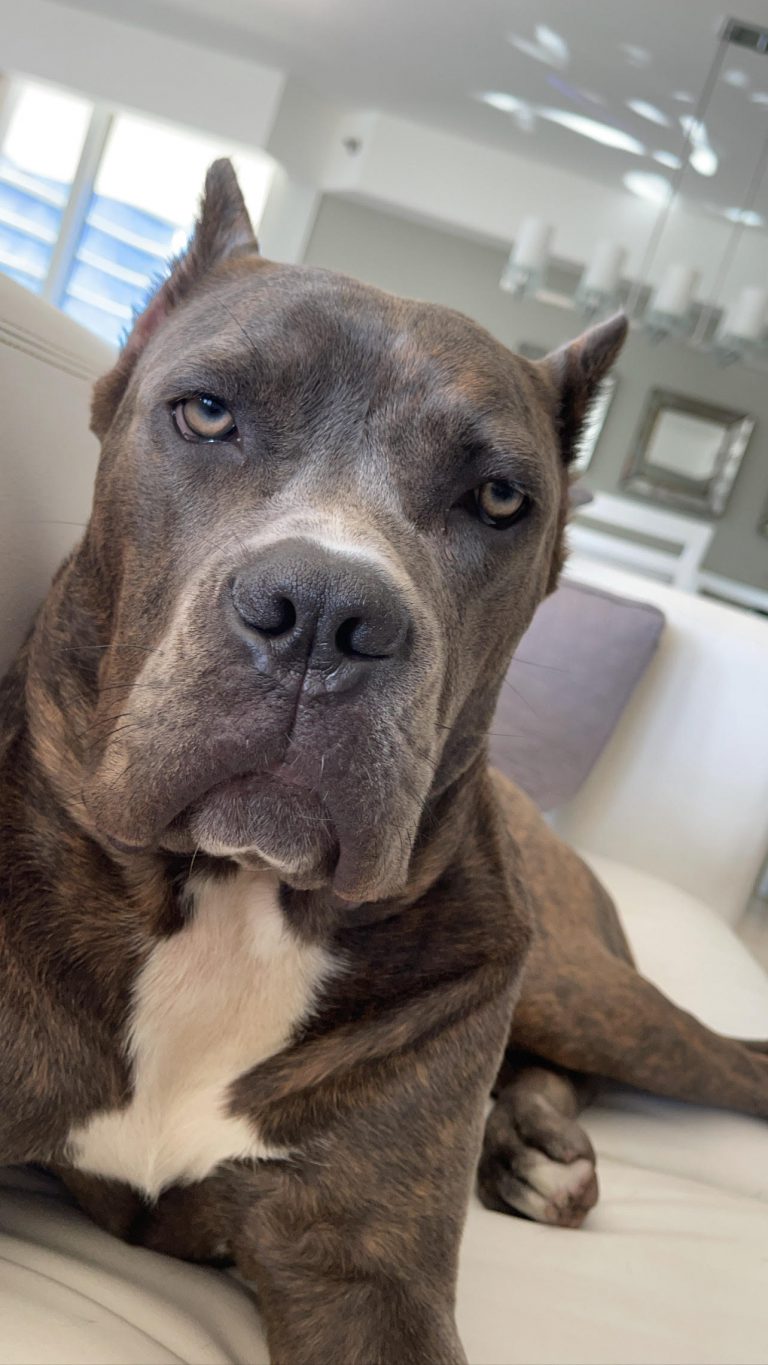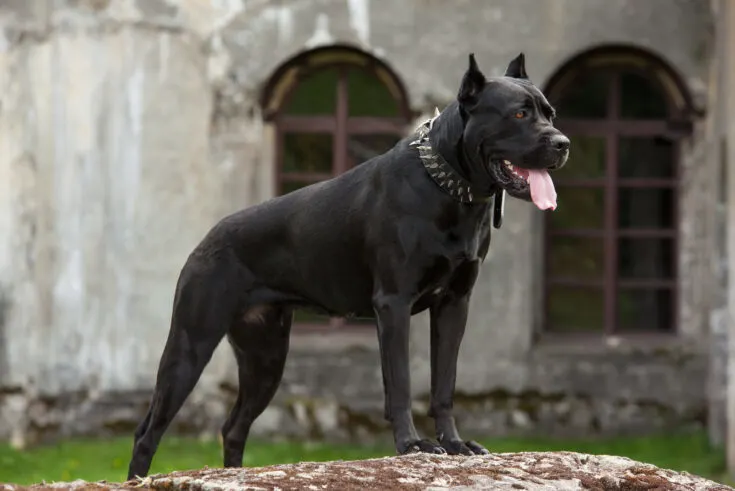
Noble, intellectual, devoted, and powerful. These are some of the most prevalent terms used to characterize the cane corso, an old Italian mastiff.
Corsos, with their huge height and protective attitude, have served as battle dogs, big-game hunters, guards, agricultural laborers, and more throughout their long history. And, despite almost vanishing in the postwar era, they have grown in popularity in recent years, becoming among the top 25 most popular dog breeds in the United States.
In conclusion, the cane corso is a large dog that requires an attentive owner that is prepared to invest time in training and socializing.
While these canines are not for beginners, they make wonderful companions. “I can’t say enough about how amazing this breed is,” says Melanie Vandewalle, president and creator of Must Love Corsos Rescue. “They certainly need a greater degree of administration, but they are very devoted and clever, and they are really unique.”
Here’s all you need to know about the estate’s guard, the cane corso.
An overview of the cane corso’s history
The history of the cane corso dates back to ancient Rome and beyond. Most scholars think they are derived from the now-extinct Greek Molossus dogs, and that they became the Roman “pugnaces” after being mated with fighting dogs from England (a category of dogs used for attacking wild animals). They used to fight with Roman armies, hunt boar and other wildlife, and subsequently protect livestock, property, and people on farms.
The corso almost went extinct after WWII, but it made a comeback in Italy in the 1970s and was introduced to the United States in the 1980s. The American Kennel Club recognized the breed in 2010.
Their name means “guard of the estate” in Latin, while other corso supporters, like Vandewalle, think it means “coursing dog,” alluding to the sport of coursing, or following animals by sight (as opposed to scent).
The Cane Corso today
Regardless of the name’s history, the cane corso (pronounced Kah-nay corso) is a working dog at heart, with the urge to guard its family.
Corsos are archetypal mastiffs in every way: they are enormous and striking, clever and loving, and devoted to their owners.
Adult corsos have an imposing height, standing about 27 inches tall and weighing between 80 and 120 pounds, with a huge, square head and deep chest. But ask any corso owner, and you’ll hear a common theme: Vandewalle’s first corso, Menace, is a friendly lap dog.
Paulina, the owner of Francesca the corso (seen below), describes her dog as “the kindest.” “She believes she’s a lap dog and constantly wants to be on top of us,” she explains.
Corsos, like many muscular, high-drive, or “tough-looking” dogs such as pit bulls, Rottweilers, and German shepherds, have developed a reputation for being hazardous, if not hostile. And, as with all of these dogs, breed specialists say that reputation is more than a bit harsh, and many of the tales about violent corsos are really stories about irresponsible dog owners.

According to the American Temperament Test Society, cane corsos do not score high on aggressiveness scales but do rank high on tolerance of unusual settings. (In comparison, 88% of cane corsos tested passed the ATTS exam, and 85% of golden retrievers did.) Corsos will defend what they are taught to protect, guard what they are trained to guard, and if they are not given any direction, they will begin to make their own decisions and may act out in terrible ways.
The corso’s reputation as a violent breed, similar to that of pit bulls, produces a negative feedback loop: individuals purposefully seek them out for those perceived hazardous features and mismanage or even mistreat corsos, which may increase hostility.
The personality of a cane corso
Each Corso has its own unique personality, just like every other living thing. There are three dogs in Vandewalle’s household; one barks often and alarms at everything, while the other two seldom bark. Only one of her dogs has any interest in playing fetch with balls or frisbees.
Corsos have a calm demeanor when properly socialized and given responsibilities to accomplish (even if those activities are as basic as training and skill practice every day).
These are family dogs,” Vandewalle stresses. They have tremendous respect for their citizens. Even though they are guard dogs and will defend their territory, they are not hostile.
In reality, costs behave well among strangers, other animals, and even calm children if they are socialized and trained appropriately at an early age.
Just what does it take to keep a cane corso happy and healthy?
The hands-on, constant training that a cane corso requires makes them unsuitable for novice owners. These canines are not the kind that can be taken to a puppy etiquette lesson and then left to their own devices for the rest of their life. However, very few dogs really are.
Vandewalle claims, “They cherish their family.” They aren’t exactly running about like energized bunnies. Yet, they are not pets; they are working dogs. So, they ought to get a job.
Activities that provide training, socializing, and physical activity
Due to their high intelligence, Corsos need clear, consistent teaching from their owners throughout their lives. They will follow their natural inclination to see everything outside their immediate family and their possessions as an enemy if they are not taught otherwise.
The process of socialization must begin early on and continue throughout their lives. Your dog should be gradually exposed to as many people, sounds, situations, and commonplace objects as possible in a safe and controlled environment.
Having a clear and consistent set of rules is essential for teaching a Corso. Consequently, it’s important to begin training puppies with rules very away (or as soon as you bring your adult dog home). It’s crucial to keep your mind and body active on a regular basis. Although individual dogs vary, most corsos need at least three daily walks or some kind of outside activity totalling at least one hour.
Mental stimulation, sometimes known as “work,” is crucial to Corso’s health. Many dog trainers and breed specialists believe that mental exercise is even more beneficial than physical activity in depleting a dog’s energy. They were bred to help their families and need consistent training and limits otherwise they may become harmful by improper pawing, leaping, or alerting.
Vandewalle says that “behavioral difficulties” is a common explanation for why owners give their pets up. Your dog still needs the mental and physical stimulation that “job” brings, even if you don’t have a real farm to defend. Nose games are a fun way to use brain energy and are generally enjoyable. You may try a flirt pole, an obstacle course, or an agility course in your garden by using common household items to construct one or by purchasing one specifically made for such usage. Get your corso to pull a sled this winter if you live someplace with snow! (Make use of a weight-distributing harness.)
Common cane corso health issues
There is a larger chance of joint issues in corsos, as there is with many big breeds of dog. Arthritis, hip dysplasia, and elbow difficulties are prevalent in the breed and may be made worse by excess weight. This emphasizes the need of providing a balanced food in appropriate amounts. High-impact exercises like jogging may be particularly harmful to your joints and should be avoided if at all possible. However, after the corso’s growth plates have fused together as an adult, Vandewalle claims they make excellent hiking companions for the physically active. Avoid injuring your joints and spine by leaping from high surfaces, such couches and automobile trunks.
Corsos, like many other huge and enormous breeds, may suffer from a potentially fatal illness called bloat, in which the stomach twists and expands due to an accumulation of gas. The medical terms “bloat” and “gastric dilatation and volvulus” are really more like “mixed” terms. When the stomach expands from gas accumulation, a condition known as gastric dilatation occurs. The condition known as gastric dilatation and volvulus (GDV) happens when the stomach becomes distended with gas and subsequently twists in such a way that blood supply is cut off. Drooling, vomiting, abdominal swelling, hunching, irritability, and difficulty breathing are all possible side effects.
Medical treatment must be given right away to any dog that has bloat or shows signs of bloat. Age, having a family history of the disease, and being fed just once per day are all variables that increase the likelihood of bloat. Bloat may be avoided if your corso is fed slowly. Also, although higher bowls were often suggested as a means to ward against bloat, more recent studies have shown that they may actually increase the risk of the condition.
Decompressing the stomach using an esophagus tube and doing surgery to return it to its normal place are common methods of treatment.
If your dog is going to be spayed or neutered at a young age, your veterinarian may suggest doing a treatment called gastropexy at the same time. As a preventative measure against gastric dilatation and volvulus, this operation tacks the stomach to the body wall. Whether you want to know if this is a suitable choice for your dog, you should consult with a vet.
Cane Corsos suffer from separation anxiety and, although not quite velcro dogs like vizslas, they do not like to be alone for long periods of time. Vandewalle claims that corsos, being so devoted to their families, might develop separation anxiety if they aren’t trained to spend time alone. The most common problem with a person’s conduct, she explains, is anxiety. These canines “do not perform well when left alone.” As a general rule, crate training a puppy is a smart idea (read more about crate training here).
Cane Corso feeding
Foster Proper Development: If you’re caring for a cane corso puppy, know that large-breed dogs sometimes need more time than smaller dogs to reach their full skeletal maturity. This suggests that the growth spurt in certain corsos may continue for another year. Too rapid growth, on the other hand, may lead to issues like rickets and obesity later in life. Put an end to free-feeding. Instead, establish a schedule for feedings, giving a young puppy its full allotment of food three or four times a day until it is around 6 months old, after which you may reduce the frequency of its meals to once or twice a day.

In spite of the allure of artificial growth stimulants, huge puppies need careful monitoring of their calcium, phosphorus, and vitamin D intake to ensure they are getting the proper amounts. An excess of these nutrients may be harmful. For optimal health as they mature, large-breed puppies need a diet high in protein, fiber, carbs, fat, and micronutrients.
Weight control is essential for the long-term health of your dog, and this is especially true for big breeds like the corso.
Obesity in dogs is associated with several health problems, including cancer, and is therefore not only a cosmetic concern. Even a little amount of extra weight might raise your cane corso’s vulnerability to health problems like diabetes and arthritis. Keeping your dog at a healthy weight is a breeze with the help of a fresh meal plan designed just for his dietary requirements and sent to you in convenient, portion-controlled packets.
Keeping your weight down is another preventative measure you may take against joint problems. The Omega-3 fatty acids included in The Farmer’s Dog’s fresh food have been shown to alleviate inflammation and improve arthritis. Healthy lipids in kibble might grow rancid if the food is stored for too long. Instead of providing health advantages, rancid fats might actually increase inflammation.
In conclusion, fresh food is your best option if you want to provide your cane corso with a good and healthy diet. Your best bet for knowing precisely what’s going into your dog’s bowl is homemade dog chow prepared from human-grade meat and veggies. The food is pre-portioned according to your dog’s individual profile, and it’s prepared just until it’s piping hot, so keeping tabs on your dog’s weight and adjusting their calorie intake is a breeze, no matter how their activity levels or activity level changes.
If you think a cane corso or coros mix would be a suitable addition to your family, you can look into adopting one. If you’re interested in adopting, volunteering with, or just learning more about this large and stunning breed, you should check out Must Love Corsos Rescue.